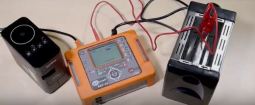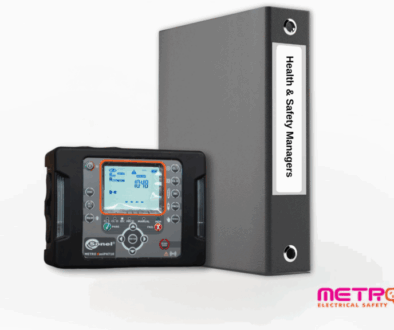Who Can Test and Tag Electrical Equipment?

Although test and tag procedure is not mandatory in New Zealand, it is a useful way for employers to meet the legal requirement of ensuring the safety of all plug-in electrical equipment. Testing and tagging involves two parts: first is a visual inspection to check for any signs of damage, and the next is an electrical check using a Portable Appliance Tester (PAT).
Electrical inspection is done on a regular basis, the frequency of which is primarily determined by the type of environment where the equipment is used. For instance, equipment in the construction, demolition and mining sector are required to be tested and tagged every three months. This is due to the harsh nature of the work (i.e. high use, high risk), which is likely to damage the equipment faster.
Which equipment needs to be tested and tagged?
Any device that has a removable plug, a flexible cord and is not low voltage, e.g. extension leads and portable RCD’s.
Portable electrical appliances are classified as either:
- Class I – earthed appliances such as irons, kettles and toasters
- Class II – doubled insulated appliances such as hair dryers and electric drills.
New fittings and appliances must be visually inspected and tagged before first use, and consequently at a frequency based on risk assessment and understanding. Used appliances are deemed electrically safe if it is tested, inspected and tagged in accordance with AS/NZS 5761. Used electrical medical devices are specifically test and marked in accordance with AS/NZ 3551.
Who can test and tag?
Contrary to common belief, you do not need to be a registered electrician to test and tag electrical equipment. However, you do need to have the required knowledge and skill in carrying out the procedure.
Electrical (Safety) Regulations 2010 requires that inspection of electrical equipment must be done by a ‘Competent Person’. As per the AS/NZS 3760 In-service safety inspection and testing of electrical equipment, a test and tag personnel must have the following competencies:
- Knowledge and skill to carry out a visual examination of portable electrical devices
- Ability to distinguish between double insulated and protectively earthed electrical equipment, and identify the correct test for each class
- Ability to perform the earthing continuity tests on electrical appliances in a compliant manner
- Ability to perform the insulation resistance tests in accordance with the standards
- Ability to test residual current devices or safety switches as per the standards
- Knowledge in the proper use of relevant testing instruments and interpreting results
- Understanding of any electrical safety regulations or legislation that may apply in the jurisdiction where testing and tagging is performed.
In other words, the person carrying out the task must have a clear understanding of what to look for and what to do.
Test and tag competency can be achieved by completing training, gaining qualifications, or having experience (or a combination of these) in using a PAT tester and tagging equipment properly. There is currently no recognised or formal registration system for test and tag technicians, although you may receive a “test and tag certificate/licence” after completing a test and tag course.

What this means for you
Whether you are an employer or a self-employed person, you are responsible for ensuring that the person who is inspecting, testing and tagging electrical equipment in your workplace is competent.
You can hire a third-party service to carry out the task. Alternatively, you can purchase your own PAT tester and train one of your workers to use it. Many companies go with the second option for a number of reasons:
- It allows them to schedule the test and tag procedure around regular work hours, and thus
- It minimises disruption to the workflow, and
- It does not hamper productivity
It is also more economical if you have a huge number of portable appliances to be tested and if your equipment is open to abuse. By abuse, it means your equipment is constantly in use or exposed to high heat, moisture, chemical corrosion, or mechanical wear and tear.
Should a device be found to be faulty, it must be tagged as out of action and only a registered electrical worker must fix it.
It is an offence under ES Regulations to tag or mark a fitting or appliance with an incorrect or false tag relating to electrical safety. The person who commits this offence is liable on conviction to a level 2 penalty.
A certificate of conformity or test report that shows that a low-voltage fitting or appliance meets all required standards serves as conclusive evidence that the equipment is safe to use. It is also proof that an employer took steps to ensure an electrically safe worksite.
For test and tag product supply and training, send us a line at help@metrotest.co.nz or call us on 0800 638 768.


